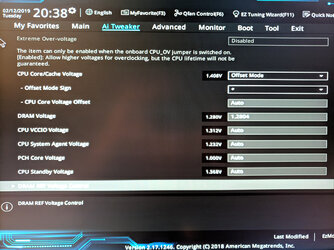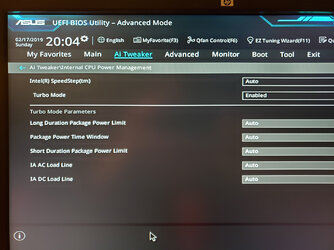I built this system a couple years ago and tried to overclock it before deeming it was a crappy chip because I had to crank the voltage quite a bit to get to 4.6GHZ, which is pretty much the benchmark for this chip from what I can tell. Anyway, my specs are as follows:
CPU - Intel 6600K
Motherboard - Asus Z170-AR
RAM - 2x8GB Gskill 2666
GPU - GTX 1070 G1 Gaming
Cooler - Noctua NH-D14
PSU - Seasonic 850W Gold
Now, pretty much all I've done is change the ratio to 47 and my RAM to 3100MHZ at 1.28v. I have the voltage set manually for my CPU at 1.4. My temps are at most low 70s as seen below (This was before I manually set the voltage so disregard those readings):

Here are current CPU-Z screens:


With these settings it's stable with MemTest86 at 14 hours and Aid64 for 4 hours. I've also run RealBench for a few 15 minute sessions without issue.
What I'm wondering how exactly I have to set Offset or Adaptive mode for the voltage as I am aware having it set to a static voltage isn't ideal. Anything else I can dial in?
CPU - Intel 6600K
Motherboard - Asus Z170-AR
RAM - 2x8GB Gskill 2666
GPU - GTX 1070 G1 Gaming
Cooler - Noctua NH-D14
PSU - Seasonic 850W Gold
Now, pretty much all I've done is change the ratio to 47 and my RAM to 3100MHZ at 1.28v. I have the voltage set manually for my CPU at 1.4. My temps are at most low 70s as seen below (This was before I manually set the voltage so disregard those readings):
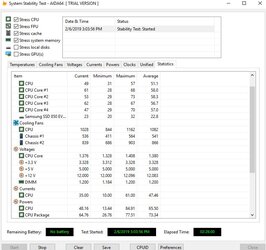
Here are current CPU-Z screens:
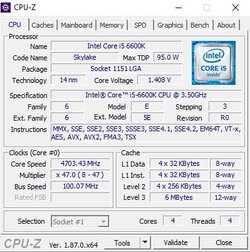
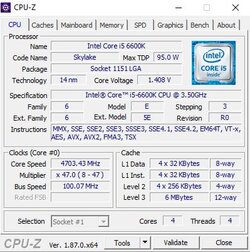
With these settings it's stable with MemTest86 at 14 hours and Aid64 for 4 hours. I've also run RealBench for a few 15 minute sessions without issue.
What I'm wondering how exactly I have to set Offset or Adaptive mode for the voltage as I am aware having it set to a static voltage isn't ideal. Anything else I can dial in?
Last edited:
